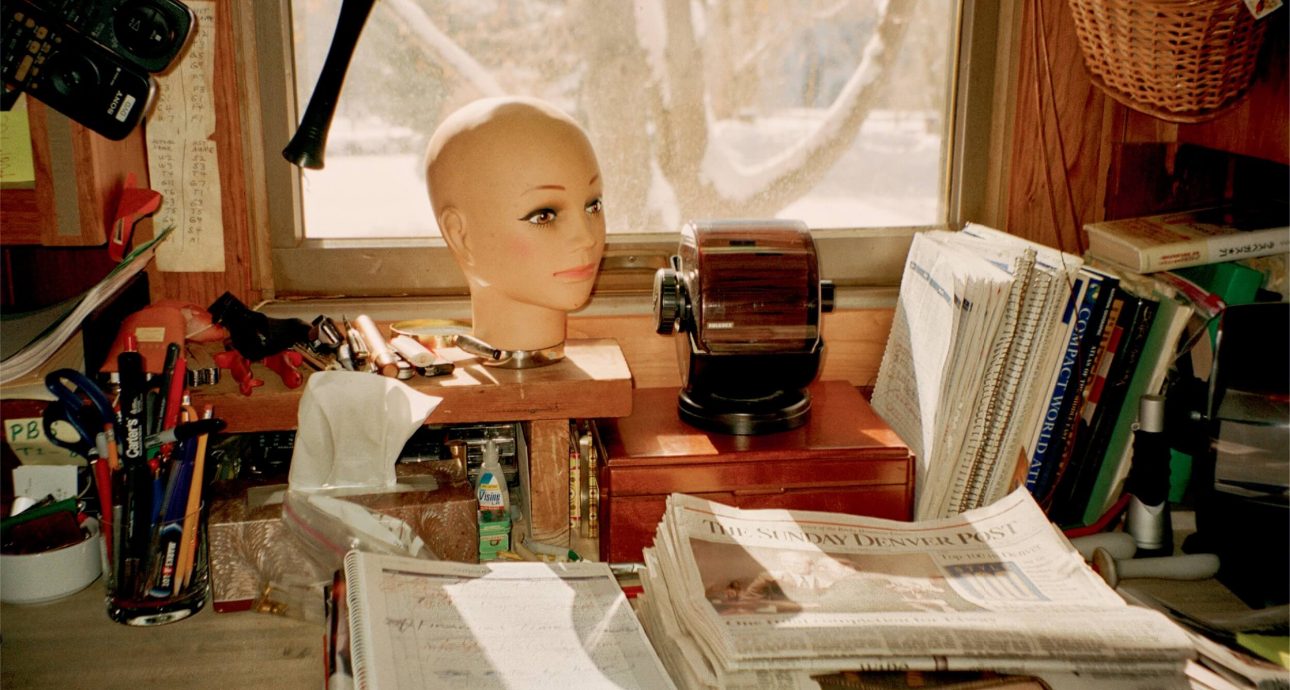
Something Else About Hunter Thompson
Thompson took his own life at sixty-seven. Shortly before his death, he said it was seventeen years more than he had ever “needed or wanted” to live. Once, Hunter stole a set of antlers from the home of Ernest Hemingway (his widow returned them only after Thompson’s death). He also used the same method of suicide as Hemingway – a shotgun wound in the head.
Chloe Sells became the writer’s assistant when she was 20 years old. In 2003, a woman approached her in a bar and offered her a night job. This woman was Thompson’s wife, Anita. Sells worked for Hunter for more than a year while photographing his place all the while. She spoke to Bird in Flight about her memories of Thompson and his Woody Creek estate.

Photographer from the USA, lives in the UK and Botswana. She graduated from the Rhode Island School of Design in Providence and Central Saint Martins College of Art and Design in London. Participant of personal and group photo exhibitions, author of the books SWAMP (2016) and Flamingo (2017).
— One night, Hunter called me into his kitchen and asked me if I was indeed a photographer. I told him that Taschen had published my photo book. He laughed, and I didn’t argue. Hunter was Hunter. After a moment, he regretted his laughter. Then he said that his whole life was already documented, except for the house. And that ramshackle estate of him in Woody Creek, Owl Farm, definitely needs to be photographed. And from now on, I can photograph the house as much as I want.
I keep in touch with Hunter’s wife from time to time, but more so with his buddies. I hadn’t published these pictures before – it wasn’t the right time. I wanted to add something more to his life story than what had already been said. After some events in my own life and after
many years since his death, I finally decided to do it. Hunter was a wild character but with good manners. I tried everything in a year, but nothing could lift his spirits. Then, on my last night around him, I realized that nothing would make him happy anymore. Since that day, he’d only lived for a month or so.
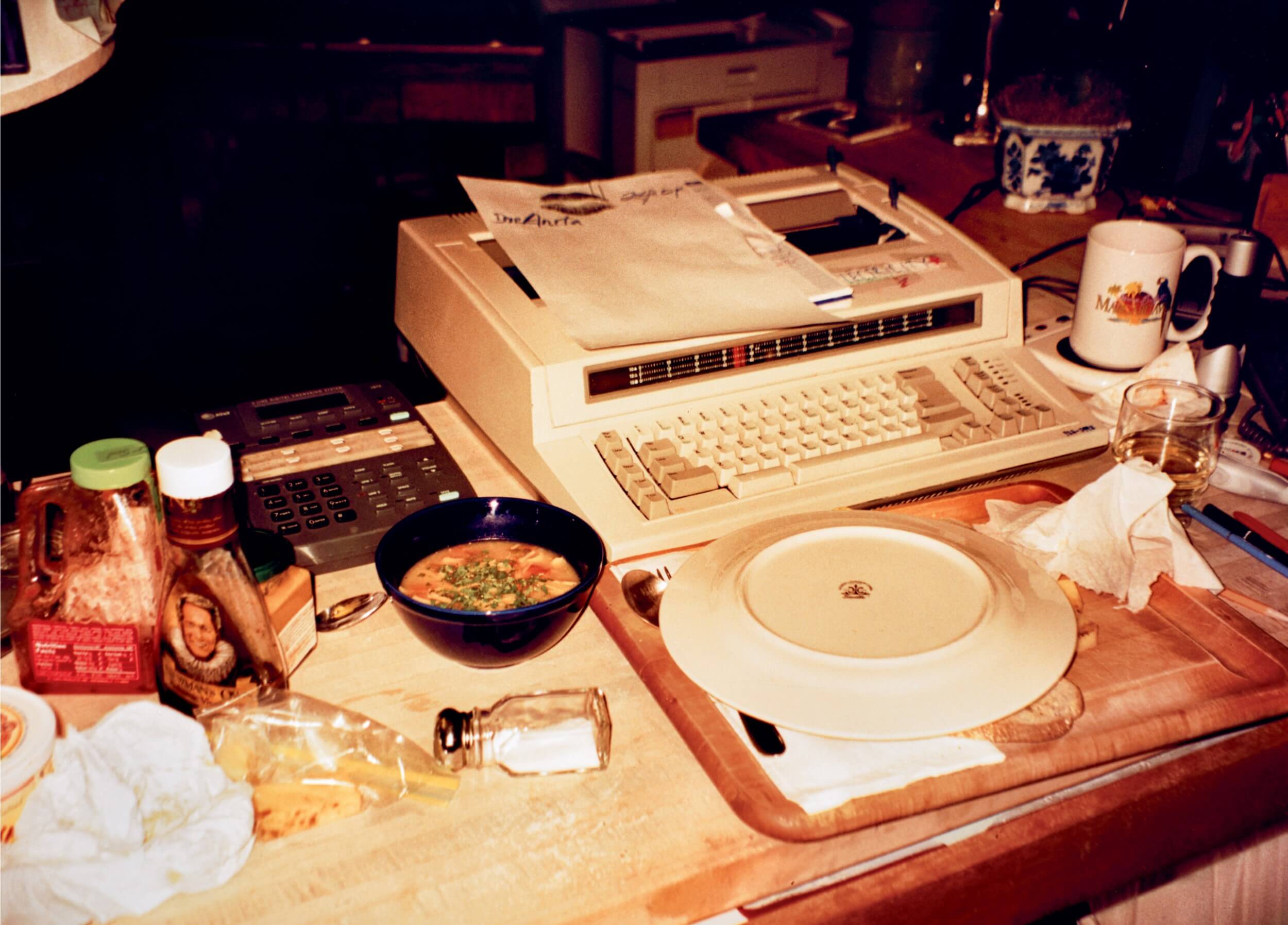
It’s said you can tell someone is an alcoholic because they have stopped eating. Hunter’s dinner was served in the deepest, quietest part of the night, long after the peacocks were put to bed and often after the guests had left. It was a cacophony of flavor: box soup, chutney, peanut butter, salsa, mustard, endive, celery, garlic salt, microwave turkey dinner, Paul Newman’s salad dressing, whiskey, coffee, beer, a cigarette
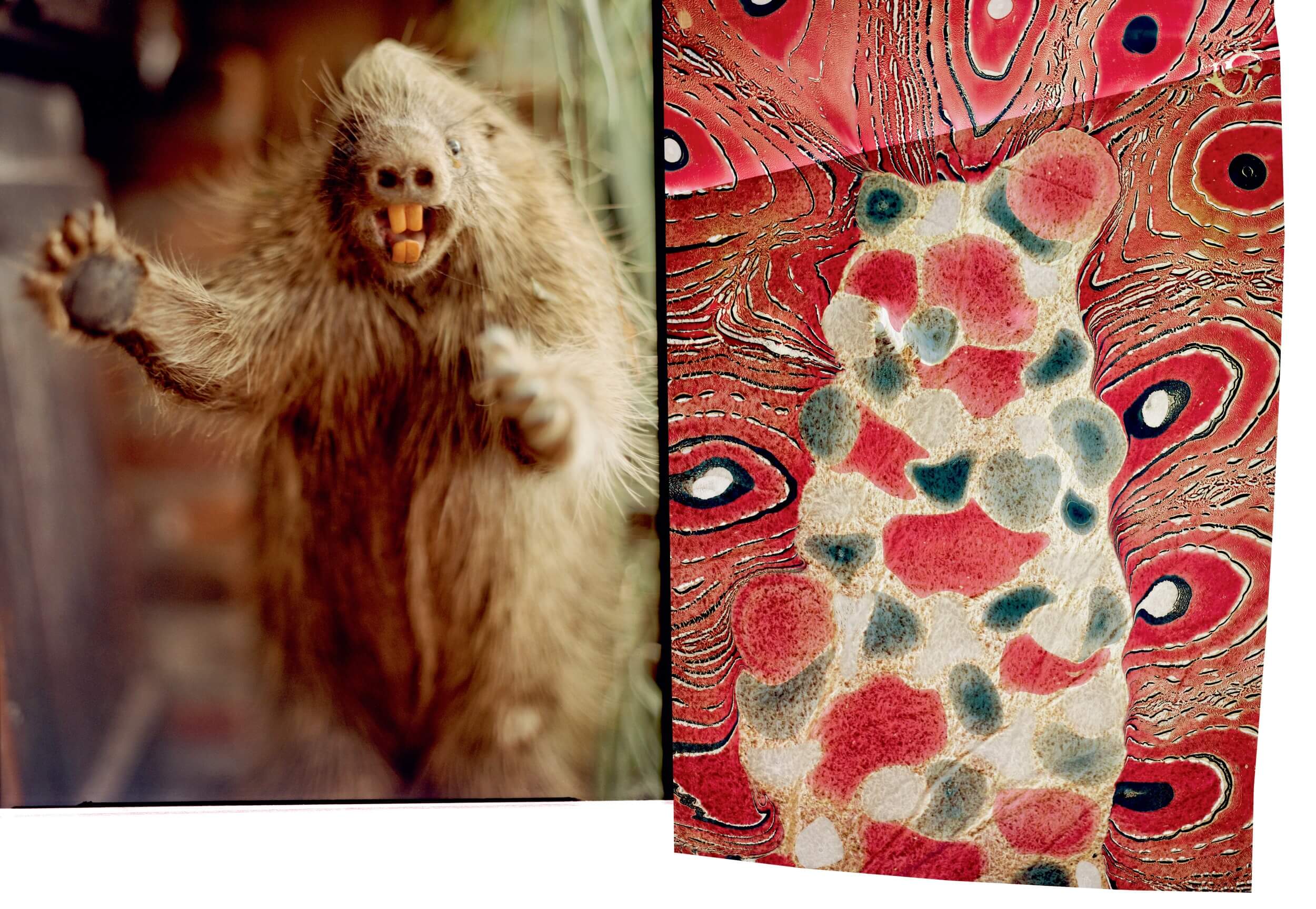
Floyd Watkins was a multi-millionaire who moved into nearby Beaver Run Ranch with his Bengal tigers and big ideas about how to transform the neighbourhood. Floyd decided to redirect the waters of Woody Creek for his trout farm, which was an unpopular decision made even more so by the ferocity of his Owl Farm neighbour. Long story short, Hunter was charged with trouticide. Hunter was sufficiently pissed off, went round to Floyd’s house and fired a few rounds into the property. Charges were filed against Hunter, who claimed that he was defending himself against an attacking porcupine. It was later discovered that it was Floyd’s own son who had inadvertently poisoned the trout.
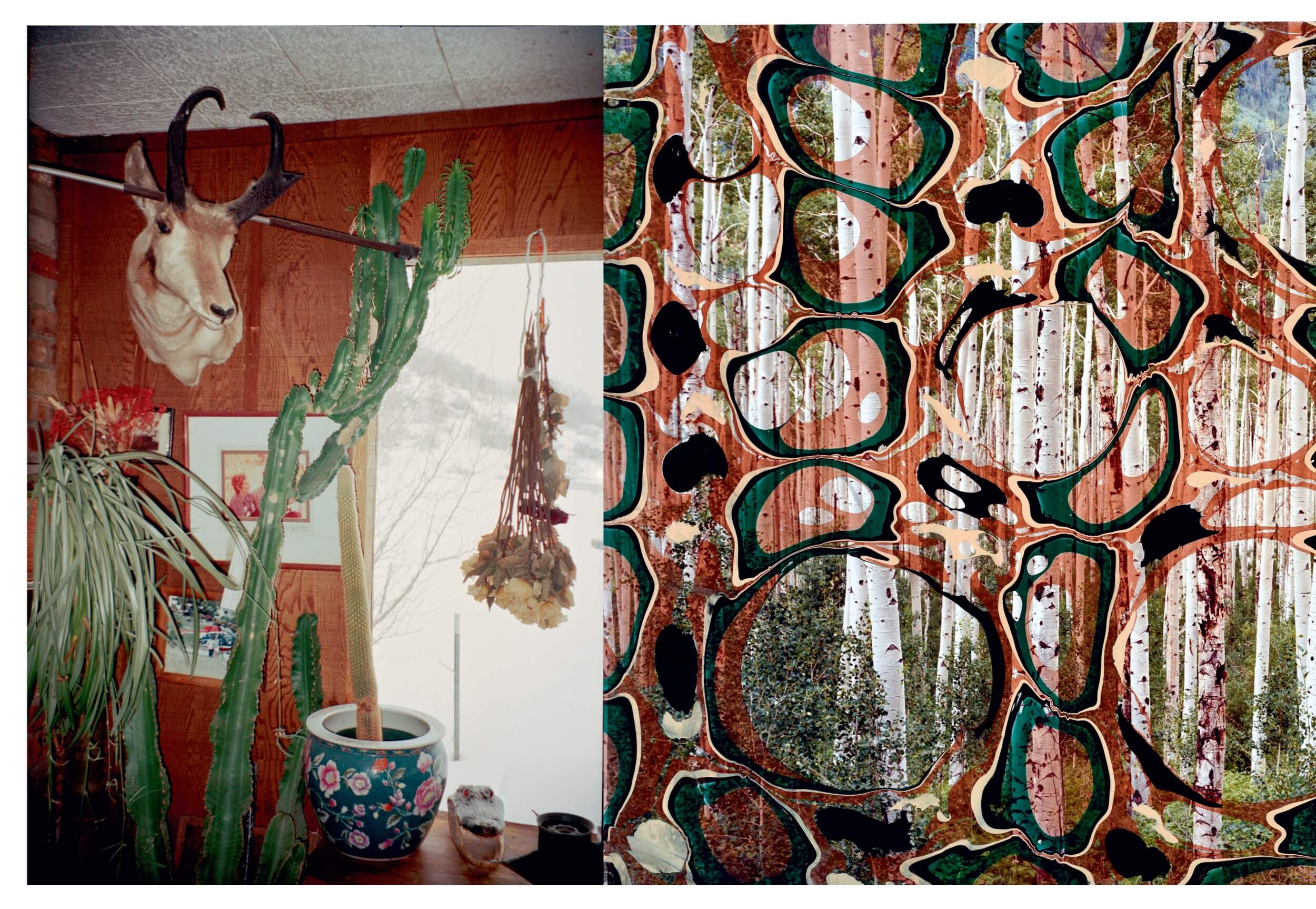
Hunter liked stuffed animals. He had a taxidermist Down Valley that he was friendly with. He liked to go down and pick his parts; the guy had trays of animal eyeballs to choose from.
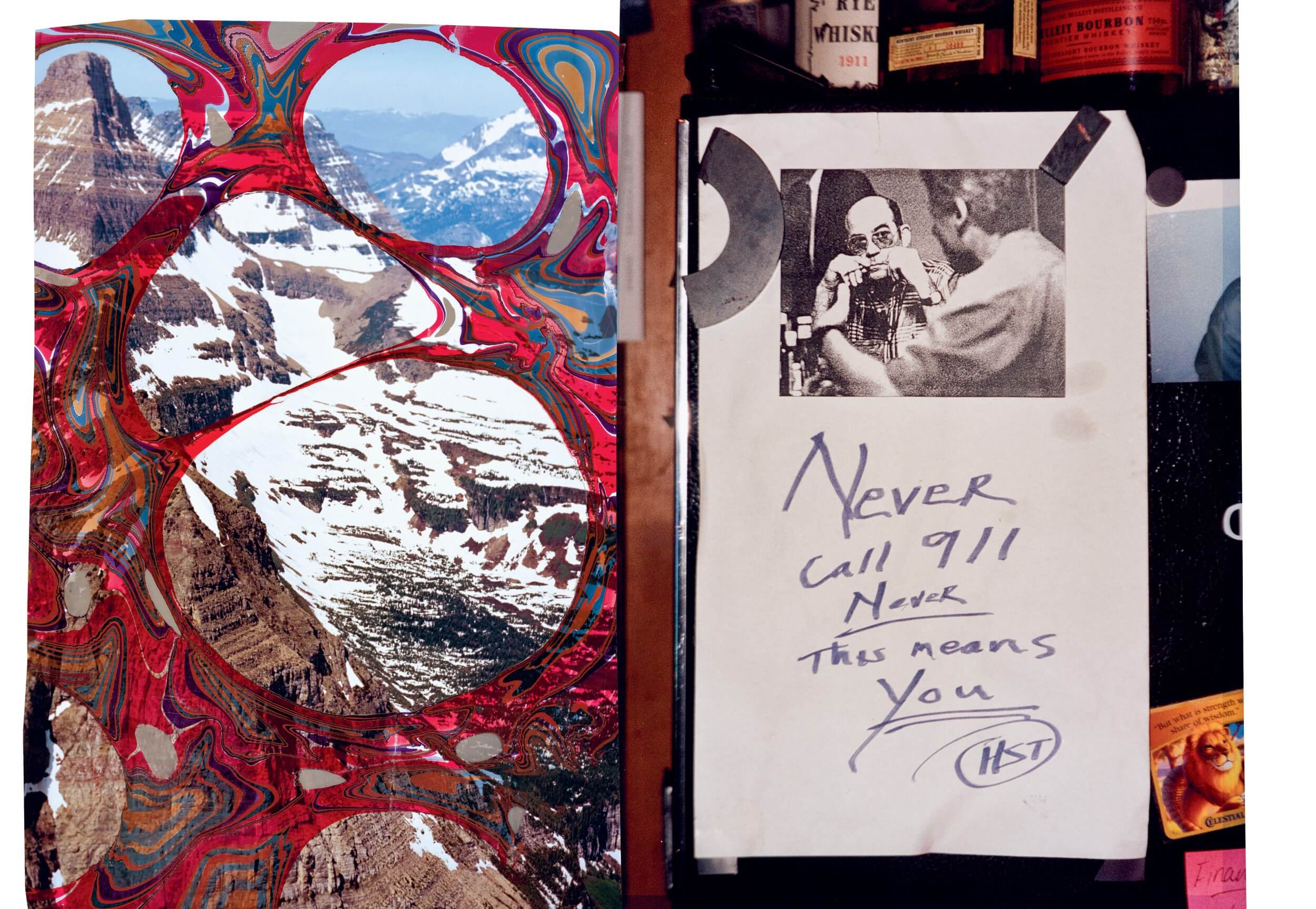
Hunter met Bill Clinton once at the D-Lux Café in Little Rock while Clinton was on his first campaign trail. Hunter gave him a saxophone reed and as he reached into his pocket to offer his gift all the secret service men in the room went immediately for their pieces.
“Big as All Texas” is one of my favorite photographs. It embodies the spirit of a night at Owl Farm. The picture shows Hunter’s dinner, a cup of coffee, a mouthpiece, a typewriter, and a daily newspaper. I combined this image with the first page of “Fear and Loathing in Las Vegas” with its legendary first sentence: “We were somewhere around Barstow on the edge of the desert when the drugs began to take hold.” The page is covered with a psychedelic pattern done in the Japanese dyeing technique, suminagashi.
Hunter Thompson believed in objects’ symbolic nature.
Objects were meaningful to Hunter. I think he believed in their symbolic nature and ability to tell stories. Like a true homebody, he collected the world around him and filled his Owl Farm with objects that made up stories, old and new. Thompson’s life experiences influenced his prophetic tendencies and added depth to his work. He wrote of Owl Farm in “Fear and Loathing in Las Vegas: “My main luxury in those years – a necessary luxury, in fact – was the ability to work in and out of my home-base fortress in Woody Creek. It was a very important psychic anchor for me, a crucial grounding point where I always knew I had love, friends, and good neighbors. It was like my personal Lighthouse that I could see from anywhere in the world – no matter where I was or how weird, crazy and dangerous it got.”
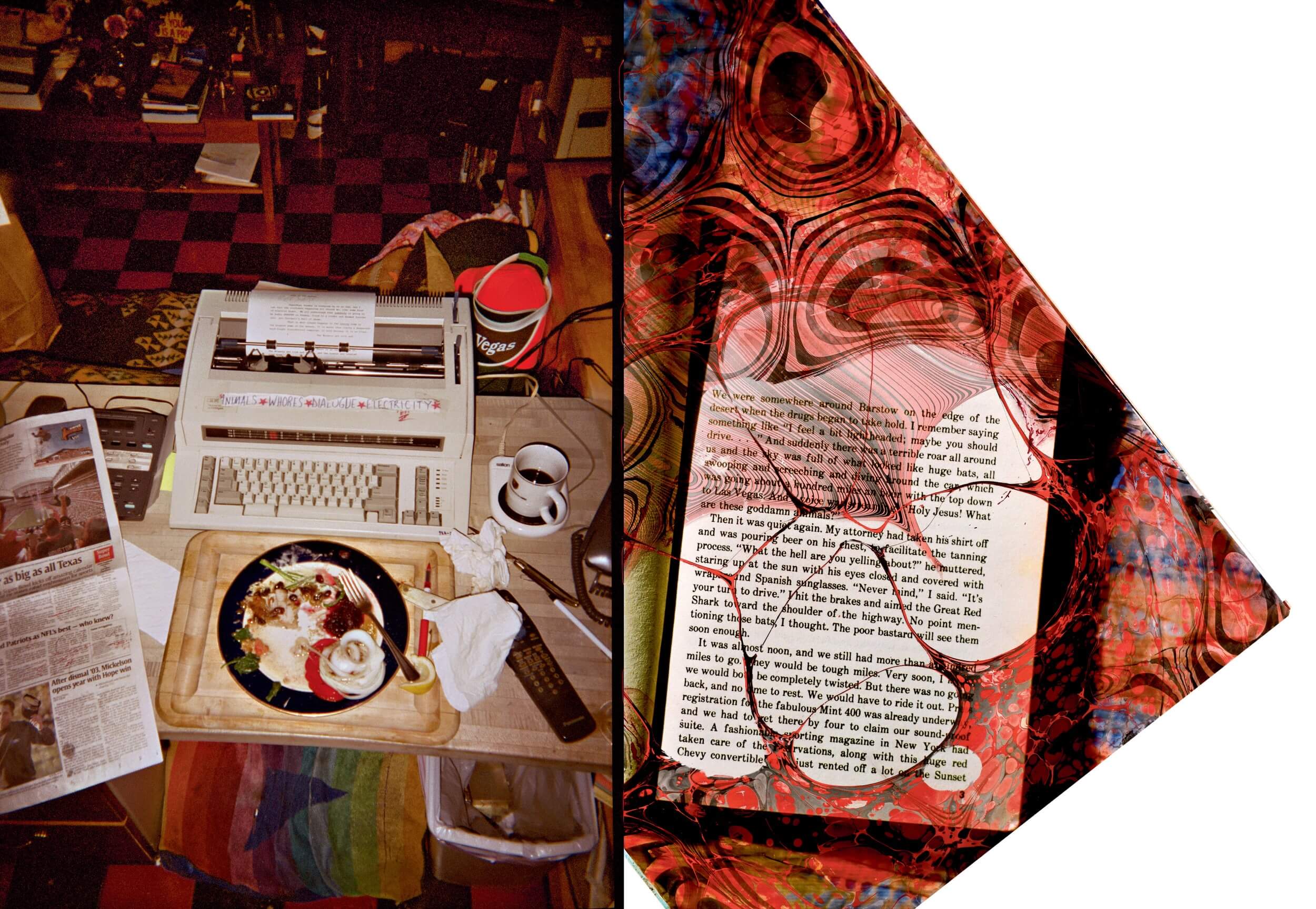
We had a stash of typewriters stored away in case of emergency which was always likely at Owl Farm. Each of them was covered in layers of saran wrap and had the typewriter repair man’s phone number taped to it. This offered little solace as he lived forty-five minutes away in and wasn’t awake 24 hours a day. When you need a typewriter, you need a typewriter.
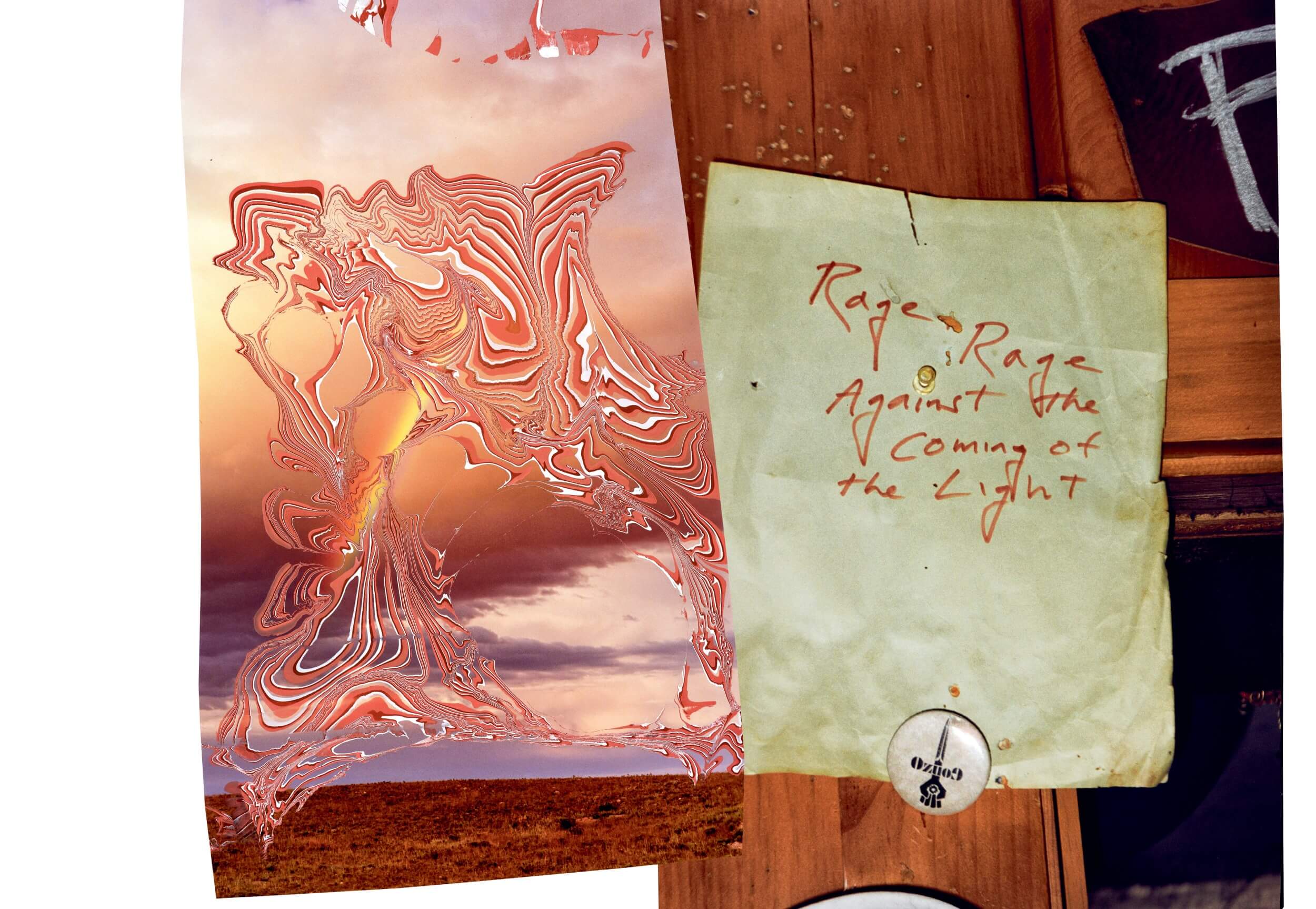
Rage, rage against the coming of the light’ was Hunter’s perversion of the refrain from Dylan Thomas’s famous poem. Through the night, from anywhere in the kitchen, the page could be read—the threat of daylight hanging like a bad smell over the goings-on.
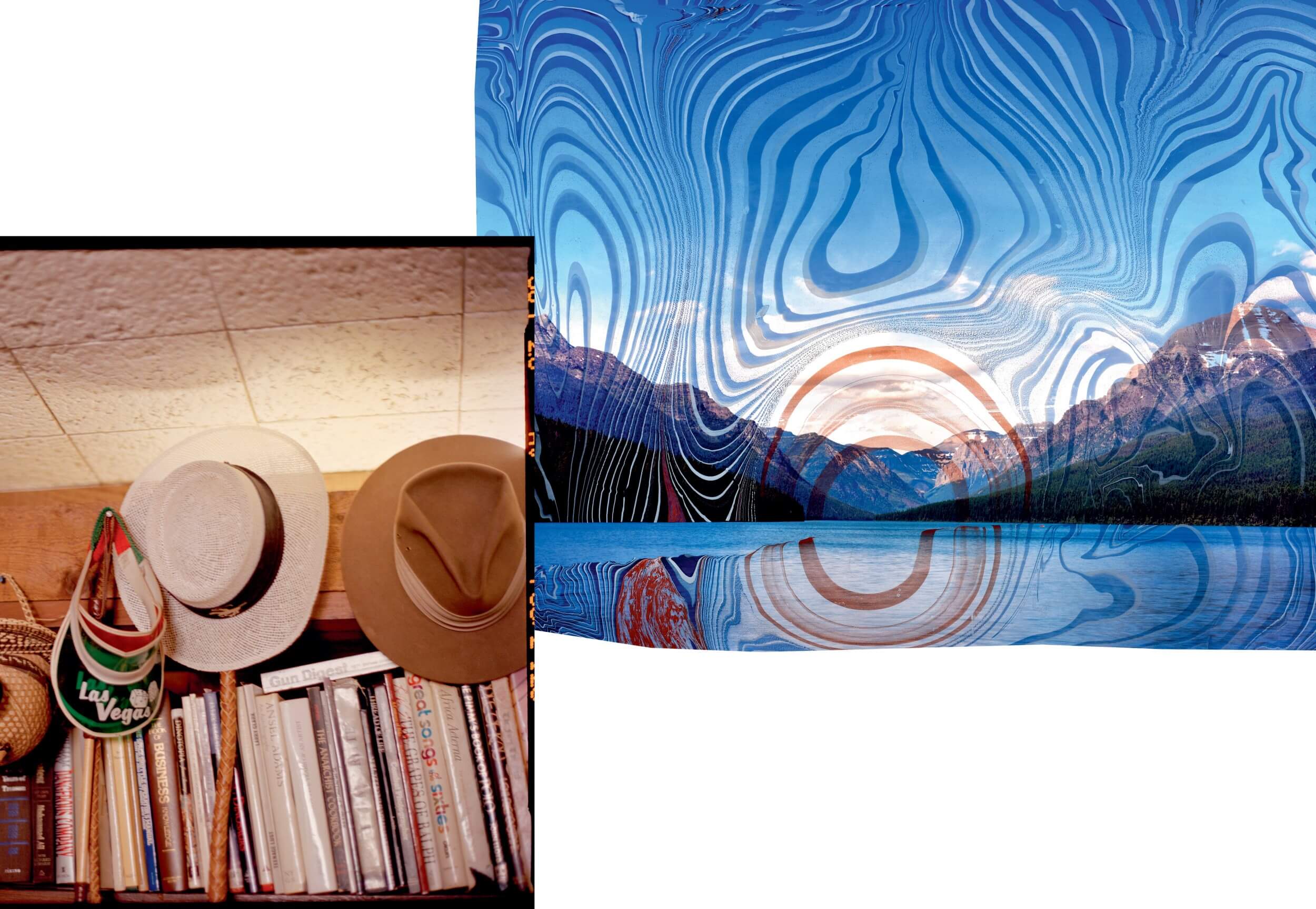
Hats were used to become any personality that was desirable in the moment, an indispensably important accessory for any occasion. There are two sets of Vegas hats, the originals and the fakes. The originals are from the days of Fear and Loathing. The fakes were fabricated by Hollywood for the movie starring Johnny Depp. One of Hunter’s best friends, the Sheriff, remembers Hunter being able to hook a hat from a great distance—a quick toss and the hat would land dead on.
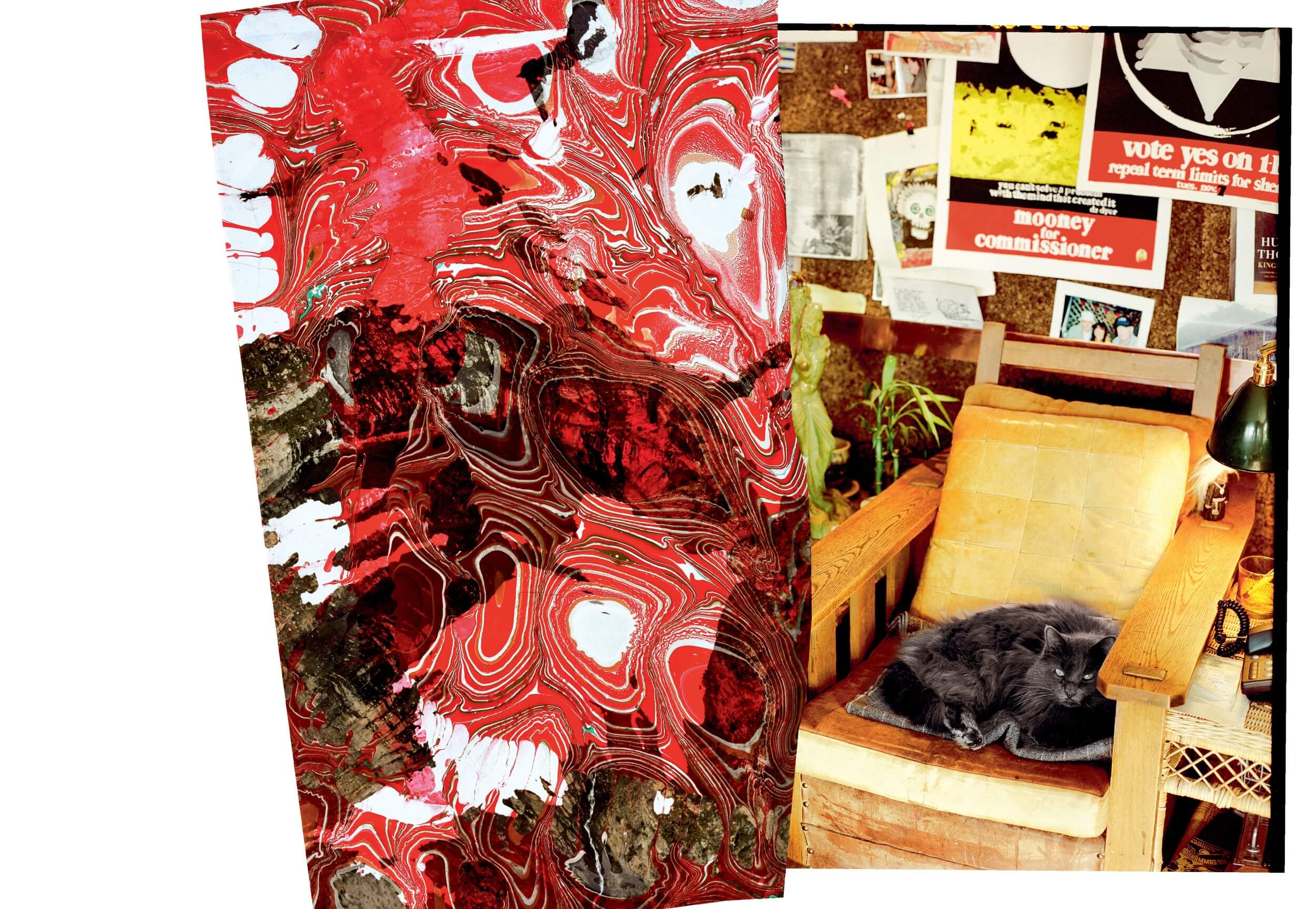
Screw Jack the cat was addicted to cocaine. Whenever he got hard up for drugs he would let forth a hair-raising cry and Hunter would scoop up some coke and blow it into his mouth.
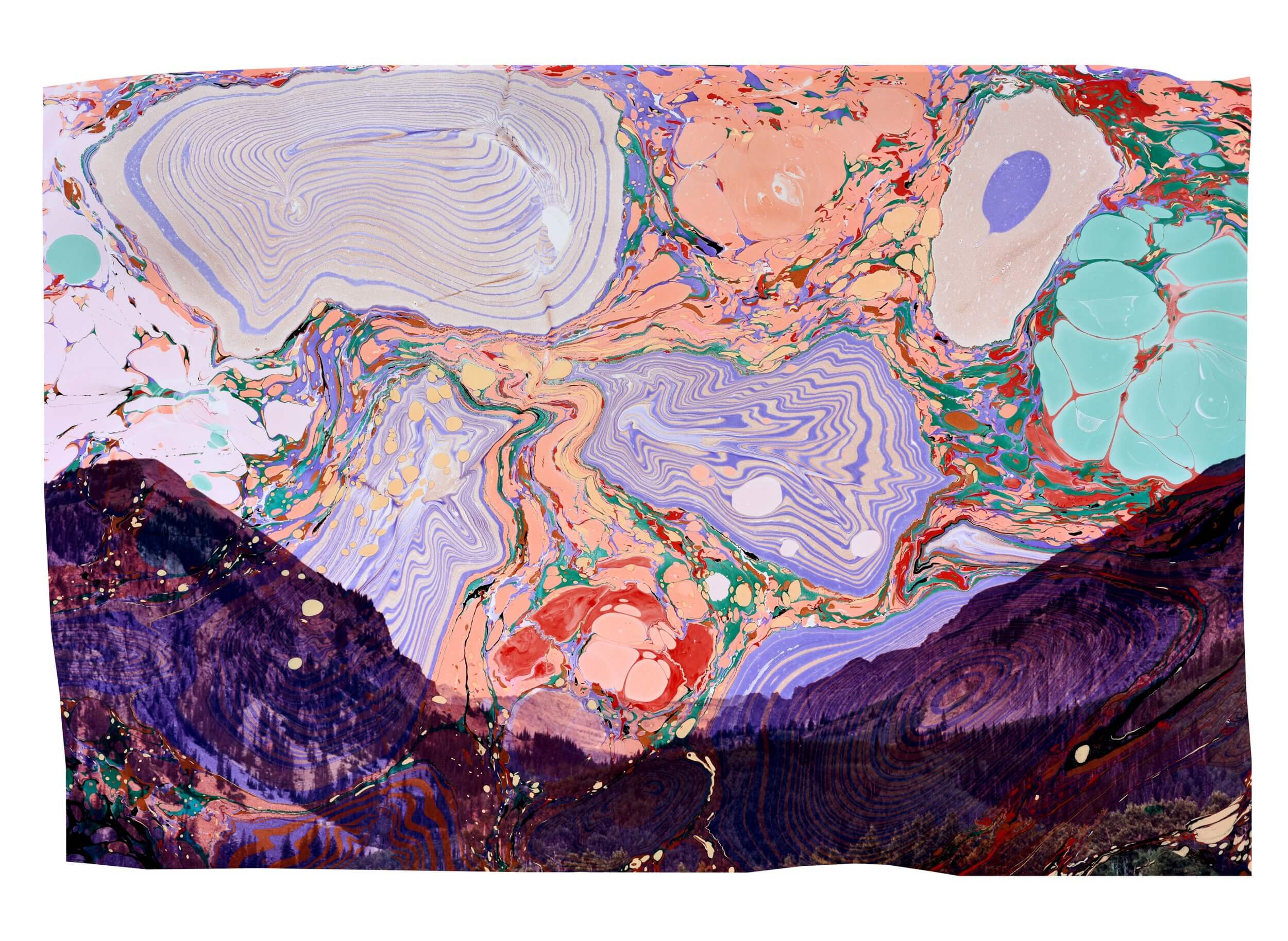
Фотографии Хлои Селлс из книги HOT DAMN! предоставлены издательством GOST Books
New and best




